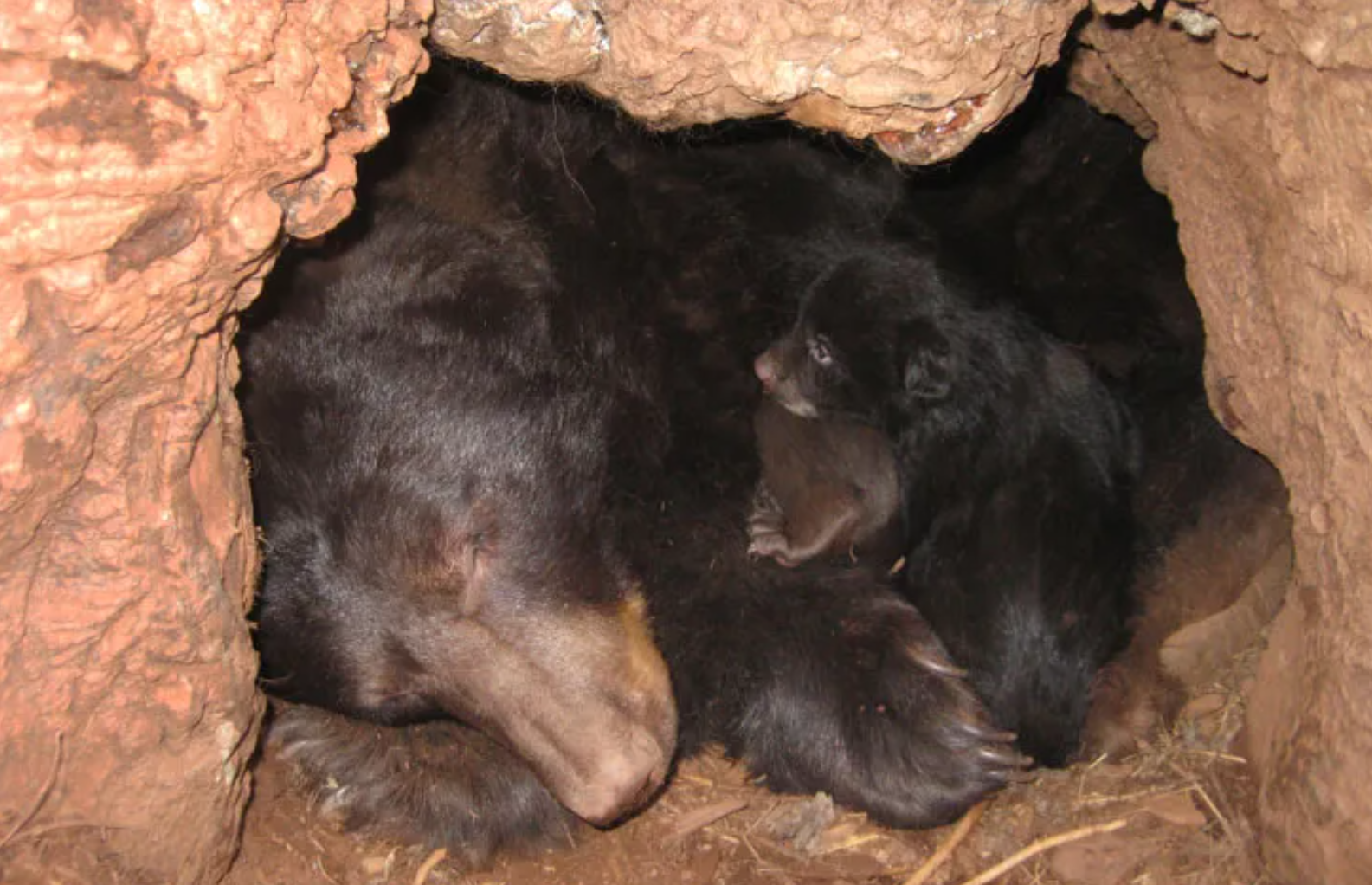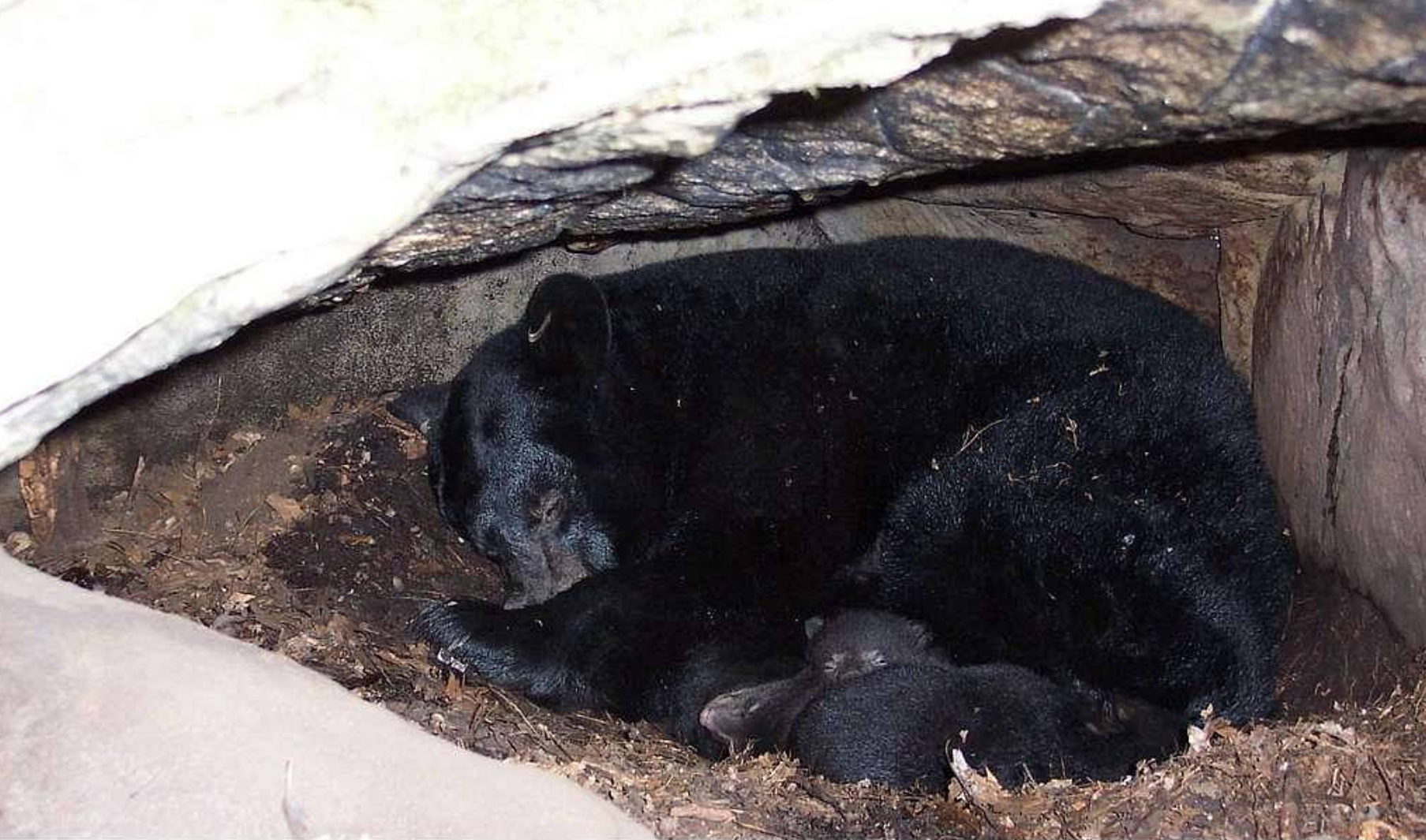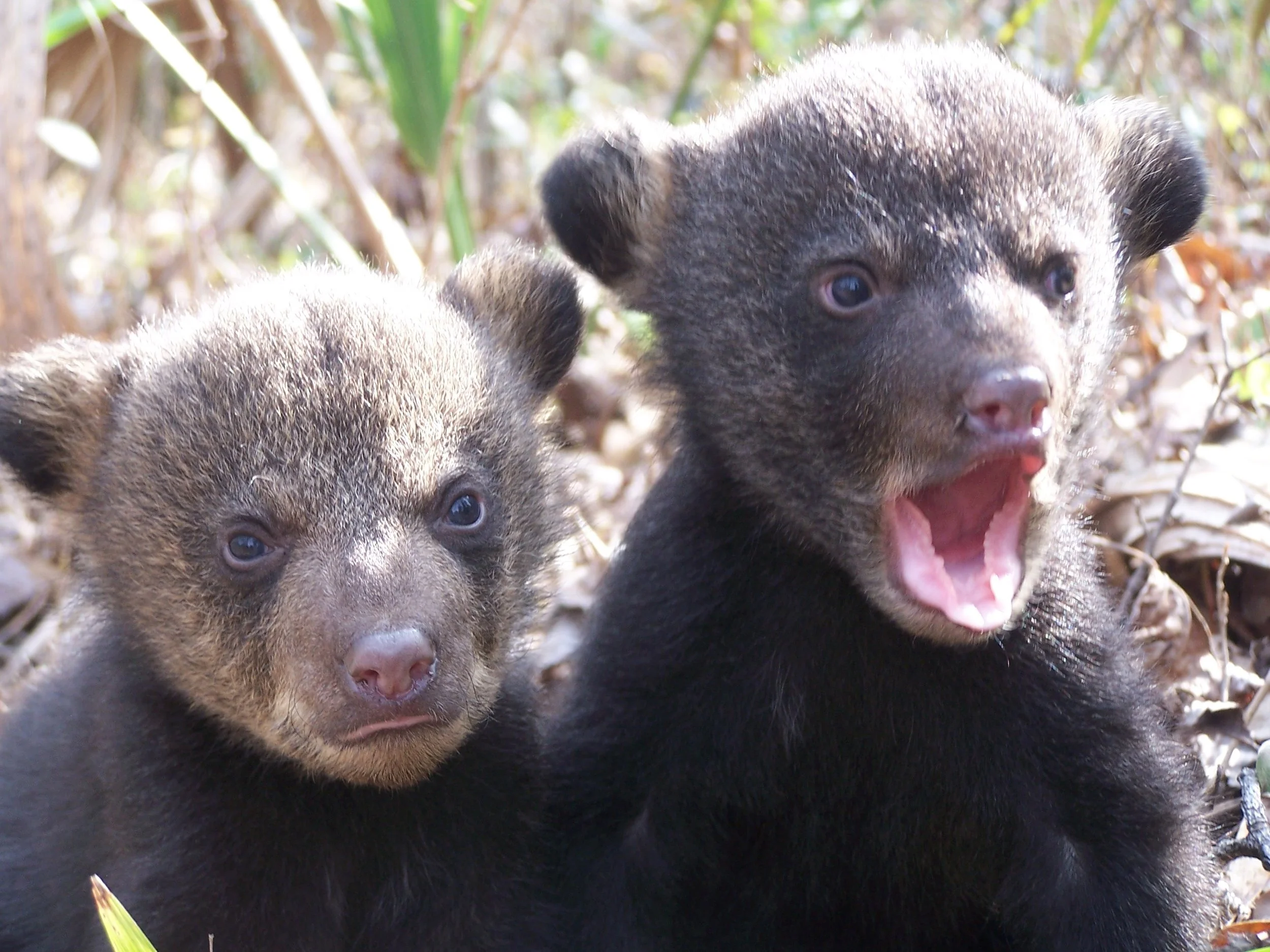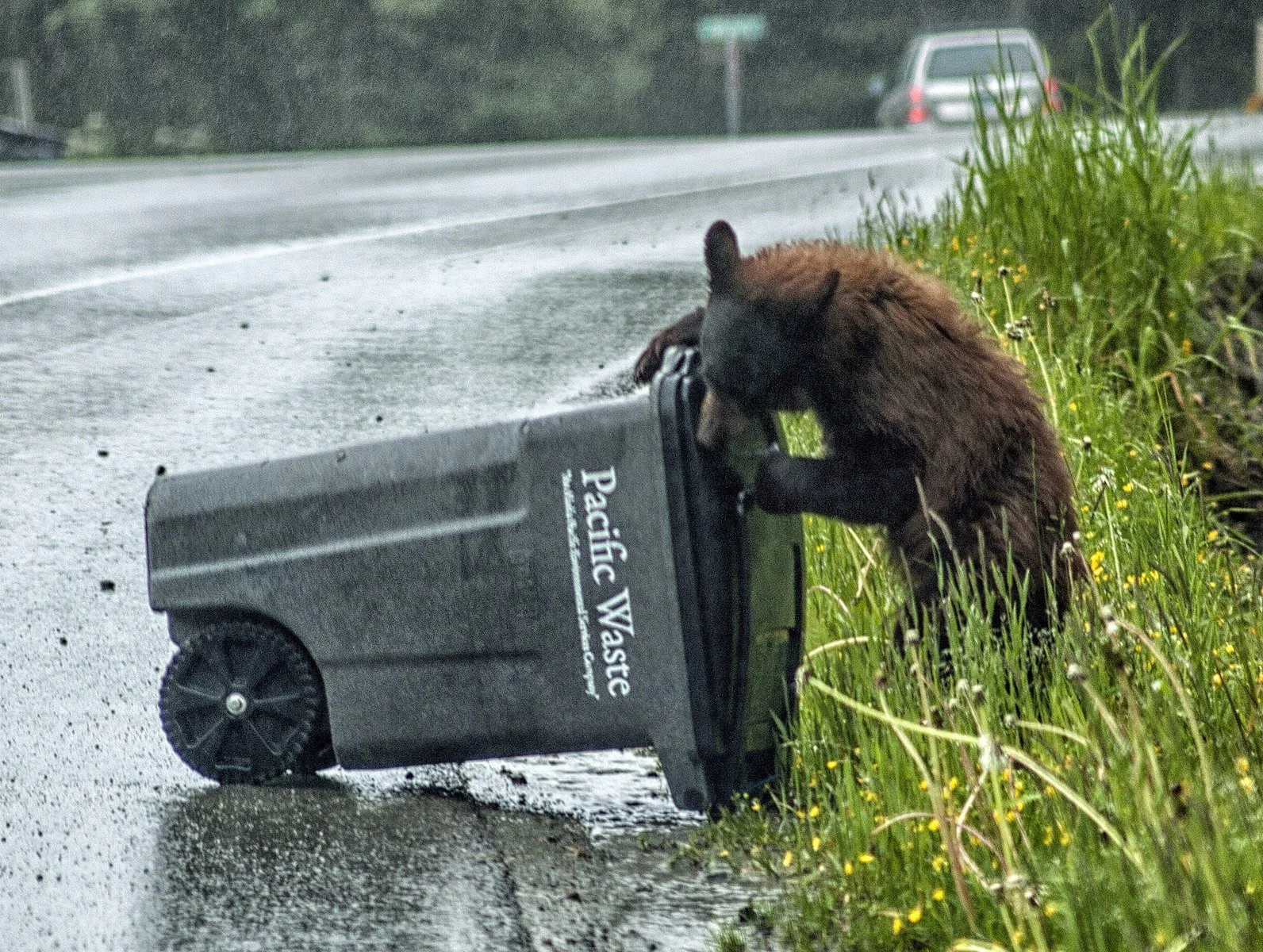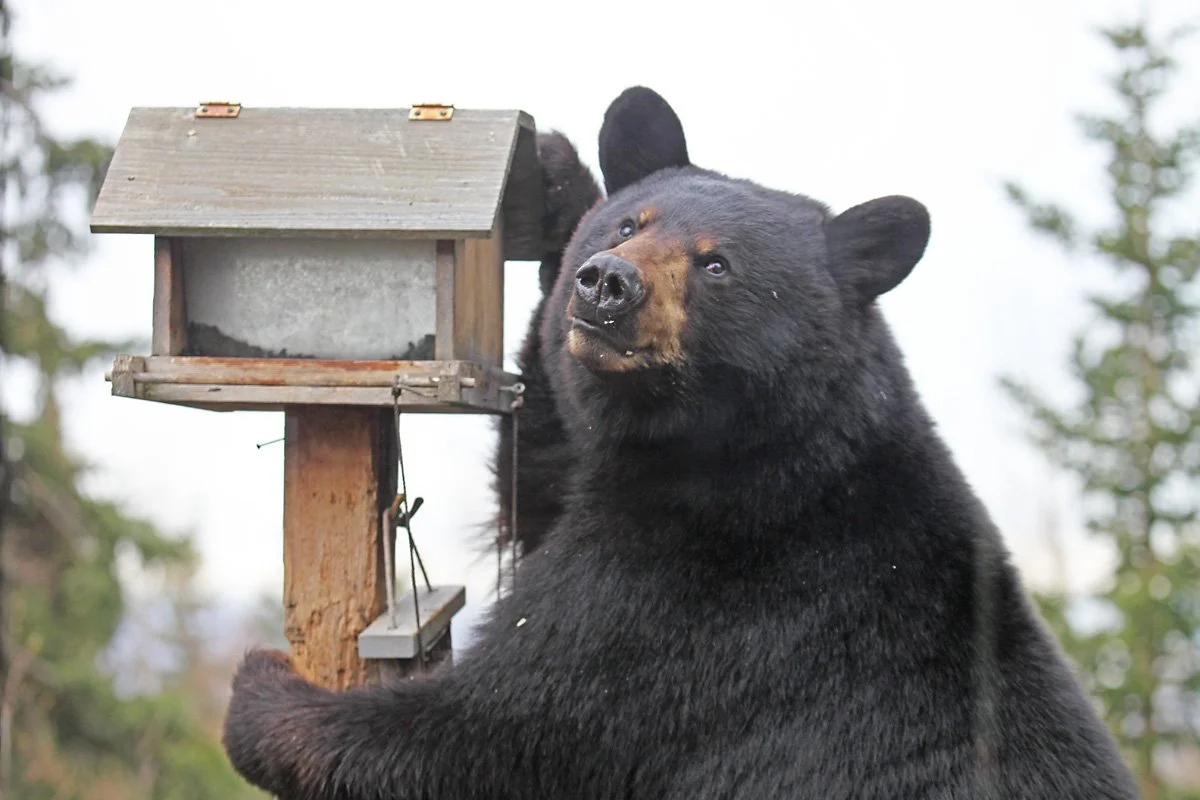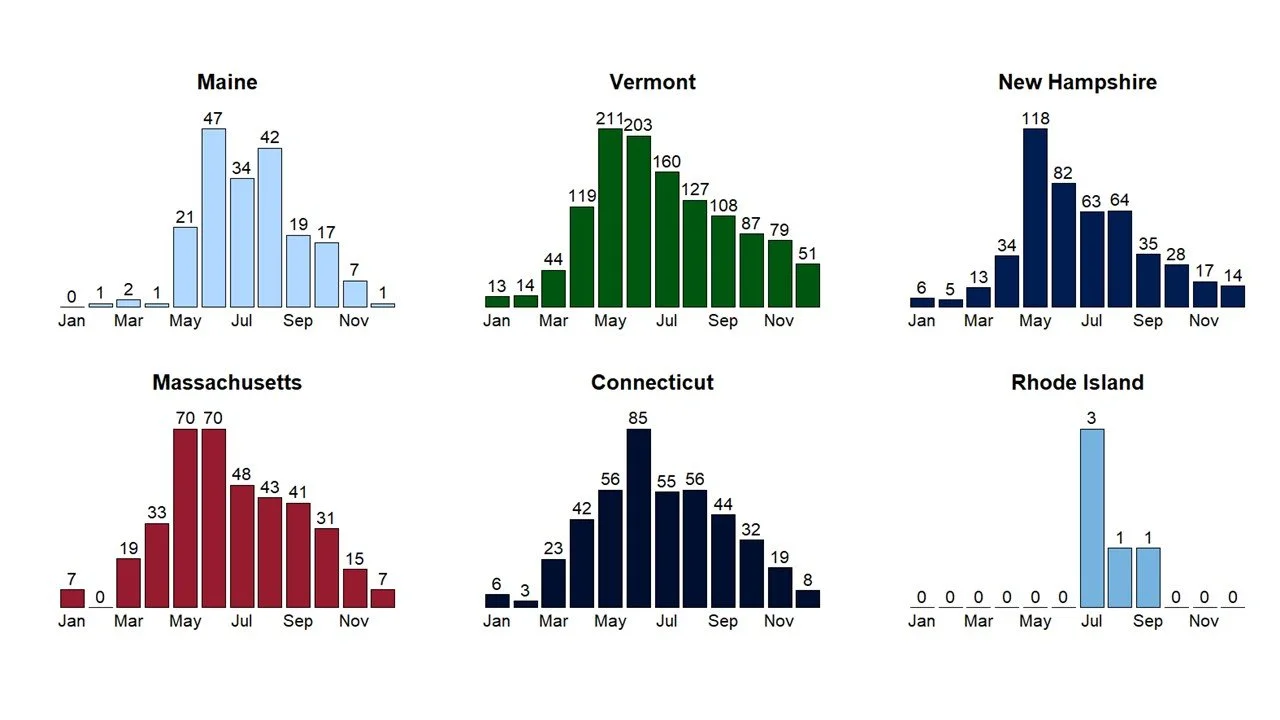American Black Bear
Fast Facts
Where: Variety of habitats depending upon the time of the year
Size: Adult males: ~200-450 lbs. (up to 600 lbs.); adult females ~150-200 lbs. (up to 300 lbs.)
Are omnivores; mostly vegetarian diet here in the Northeast
Populations are increasing and expanding
Active late-winter/early-spring to late-fall
Den from late-fall to late-winter/early-spring
Den alone, except female with cubs
Dens can be underground, in rock crevices, in dense mountain laurel thickets, and more.
Female gives birth to 2-3 cubs in den in January
Cubs stay with mom for ~1.5 years
Unnatural food sources like seed from birdfeeders and trash are a problem
Take down birdfeeders starting in mid-March through late-fall
Creature Feature
Introduction
The American Black Bear is one of three bear species in the United States. The Brown Bear (of which the “Grizzly” is a subspecies of) and the Polar Bear are the other two. The American Black Bear is the only bear found in the Northeast.
Black Bears inhabit a wide variety of habitat settings ranging from forests, shrublands, wetlands, meadows, and suburban areas. They even can be found in and around fairly developed downtown areas in their search for food.
Black Bears are generally active from spring through fall in the Northeast. Most overwinter in a hibernation-like state.
Adult males (“boars”) are ~200-450 lbs. (up to 600 lbs.) and adult females (“sows”) are ~150-200 lbs. (up to 300 lbs.). Typically individuals that live in and around areas where people live are on the heavier side due to accessing high-calorie, non-natural food sources such as birdseed and garbage.
Black Bear populations are increasing and expanding throughout much of New England. They are believed to be at their highest levels than they have been over the past 200 years.
Much of this population growth and range expansion is largely a result of the region becoming more forested following widespread clearing of forests during the mid-1800’s.
Omnivores
Much of the Black Bear’s focus during the active season is in finding food to eat. They are omnivores, meaning that they eat both plant and animal matter. Here in the Northeast, their diet is predominantly vegetarian.
Their diet changes with the seasons. This is due to the availability of different food sources. In spring, they leave their den and mainly eat grasses and freshly emerging plants. During this season, they are often found in wetland areas.
In summer, Black Bears seek out more nutritious foods. They eat berries, fruits, and plant roots. They also insects, carrion, turtle eggs, and very rarely, young deer. They are usually found in forest openings in summer because food sources are more common there.
In fall, the Black Bears’ diet shifts primarily to nuts, acorns, and ripe corn. These are very nutrient dense food sources and help them put on maximal fat stores to get them through the winter. They are most often founds in stands of oaks, hickories, beech, and other such nut- and acorn-producing trees in the fall.
Denning
Black Bears enter their overwintering den typically during late-fall. They remain in their den until late-winter/early-spring.
In the Northeast Black Bears den most commonly under downed trees, under exposed roots of trees, in brush piles, in rock crevices, or simply on the ground in dense mountain laurel thickets.
Black Bears are in a state of dormancy during this time, though are not in true hibernation. This is somewhat like a very deep sleep, but will wake up if disturbed.
During this time they consume ~25-40% of their body weight. Their heart rate drops from 40-50 beats per minute to ~8 beats per minute and their metabolic rate drops to ~25% of what it is during the active season.
Black Bears den alone, aside from females that will give birth to cubs in her den. Cubs also den with their mother during their second winter.
Cubs
A female with give birth, in her den, to 2-3 cubs most commonly. This typically takes place in January in New England.
Each of the cubs weigh less than 1 pound at birth, are ~8 inches long, and are roughly the size of a chipmunk. The cubs feed on milk from their mother and emerge from the den in the spring most often weighing between 4-8 pounds.
The cubs will stay with their mother for ~1.5 years. Then, typically in late-summer of their 2nd year they will depart out on their own.
Reducing Human Conflicts
As Black Bear populations increase throughout New England, and as their range expands into areas of more heavily human populated areas, the potential for interactions and/or conflicts with humans is increasing.
You can help reduce these chances and help bears by securely closing trash bins, not leaving pet or livestock food outdoors where it is accessible to bears, and not leaving any food scraps outside.
Birdfeeders are a huge attractant as an unnatural source of food for bears. If you live in an area where Black Bears are, please take down your birdfeeders between mid-March and late-Fall, when Black Bears are active outside of their den.
If your bird feeders have even once been visited by a Black Bear, please consider permanently taking them down year-round. Black Bears have very good long-term memory in remembering where easily-accessible food sources are.
Observations by Month
The plots above show the number of observations of American Black Bears for each month for each New England State from iNaturalist through 2023. You’ll note a general trend of a peak of sightings in early-to-mid Spring, the period of time immediately following emergence from their winter dens and likely peaking due to bears being encountered in more human-inhabited locations where they are searching for easily accessible food sources such as birdseed from bird feeders.














